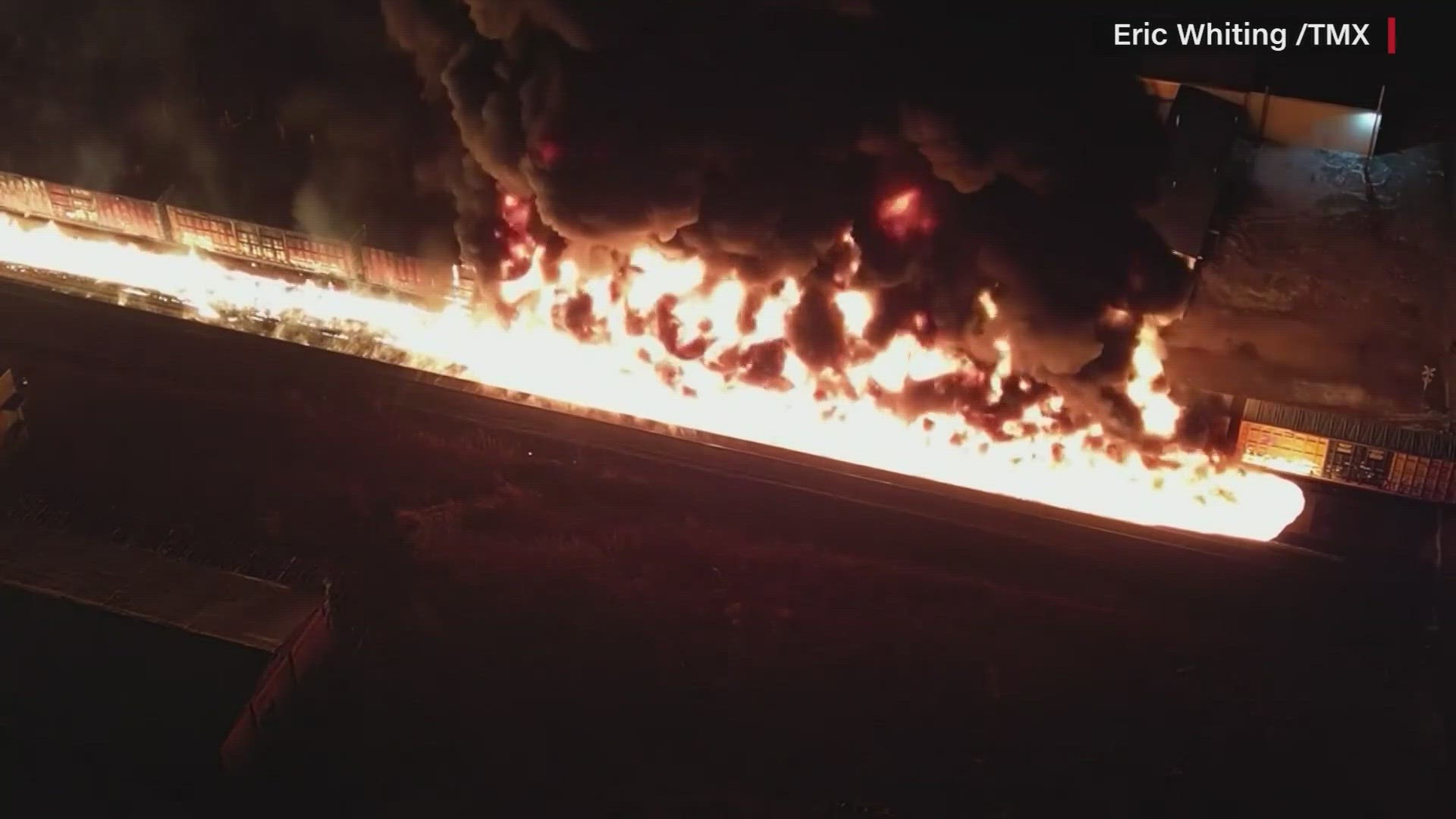OMAHA, Neb. — Norfolk Southern expects February's fiery Ohio derailment to cost it $387 million, but that total will likely increase over time and that doesn't reflect how much the railroad's insurance companies will eventually cover.
The railroad provided a detailed estimate of the cost of the Feb. 3 derailment outside East Palestine, Ohio, Wednesday when it released its first-quarter earnings report. That derailment, combined with others since then, sparked a nationwide focus on railroad safety and prompted regulators and members of Congress to propose reforms like capping the length of freight trains and setting standards for the trackside detectors railroads use to spot equipment problems.
Norfolk Southern CEO Alan Shaw has said during testimony in Congress that he'll support some of the proposals like enhanced standards for tank cars, but he thinks the data doesn't support some of the other ideas like requiring railroads to maintain two-person crews. Shaw reiterated his often-stated promise Wednesday to “do whatever it takes to make it right for East Palestine and the surrounding areas.”
The $387 million estimate includes the $30.9 million to help residents and the community around East Palestine recover from the derailment and spent millions more on the cleanup at the site where it has dug up and removed nearly 39,000 tons of contaminated soil and trucked away another 14.8 million gallons of tainted water. But many people who live near where the train derailed remain worried about possible long-term health impacts and they aren't sure how to move forward even though officials say that repeated testing hasn't shown harmful levels of chemicals in the air or drinking water.
That estimate doesn't include the amounts Norfolk Southern, based in Atlanta, will put into funds to help cover any long-term health issues and compensate residents for the loss in their property values because the details of those funds are still being worked out with Ohio's attorney general.
The railroad does have insurance coverage that will kick in after the first $75 million it spends on damage to other people's property and after the first $75 million of damage to its own property. So Norfolk Southern will be responsible for at least $150 million of the cleanup costs, but the details of how much insurance will actually cover will be worked out over time.
Norfolk Southern and the other major freight railroads have all announced changes they will make to improve safety, including installing more than 1,000 more trackside detectors to help catch problems before they can cause derailments. But the railroads aren't likely to abandon the lean operating model they've adopted over the past six years that labor unions say has made the industry riskier because so many jobs have been cut, leaving workers to spread thin and forcing inspections to be rushed.
The railroads have said they don't believe the changes they've made have created safety problems and they defend their record as the safest way to transport hazardous chemicals over land.
Norfolk Southern said Wednesday that its first-quarter profit fell 34% to $466 million, or $2.04 per share, because of the derailment costs. That's down from $703 million, or $2.93 per share, a year ago.
Without the derailment costs, the railroad estimated that it would have made $1.1 billion, or $3.32 per share. That number exceeded the $3.15 per share that eight analysts surveyed by Zacks Investment Research expected.
The railroad's expenses jumped 32% to $2.4 billion in the quarter as wages rose in the wake of significant hiring over the past year and a new contract for employees and the railroad paid more for purchased services and materials.
Revenue grew 7% to $3.13 billion as it increased rates for most of the cargo it delivered. Volume was flat overall. Five analysts surveyed by Zacks expected $3.1 billion.
The railroad said the average train speed across its network in the Eastern United States fell to 19.5 mph on average in March because it made changes to the way it assembles its trains after the derailment. Initially, that meant shorter trains that delayed some shipments, but as it adjusts to those new rules that dictate where empty cars are placed on a train and how the weight of cargo is distributed train speed should recover. At the end of last year, Norfolk Southern's trains were averaging 20.7 mph in the fourth quarter.

